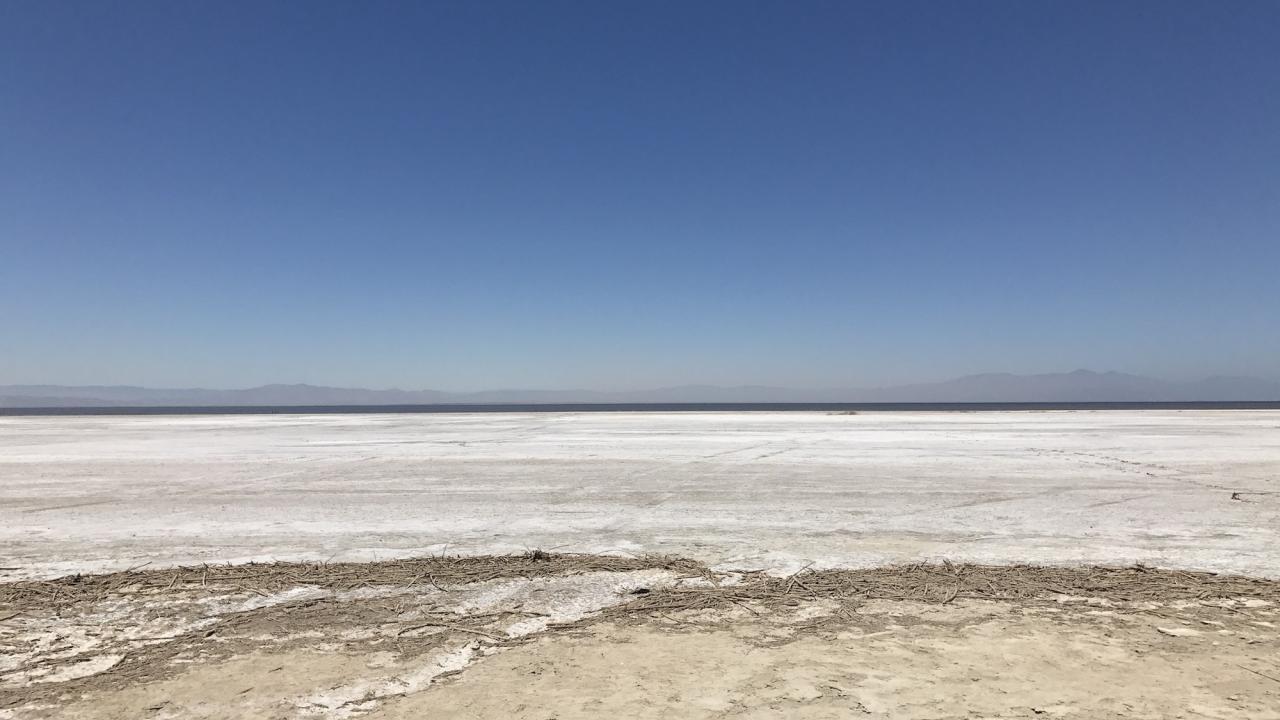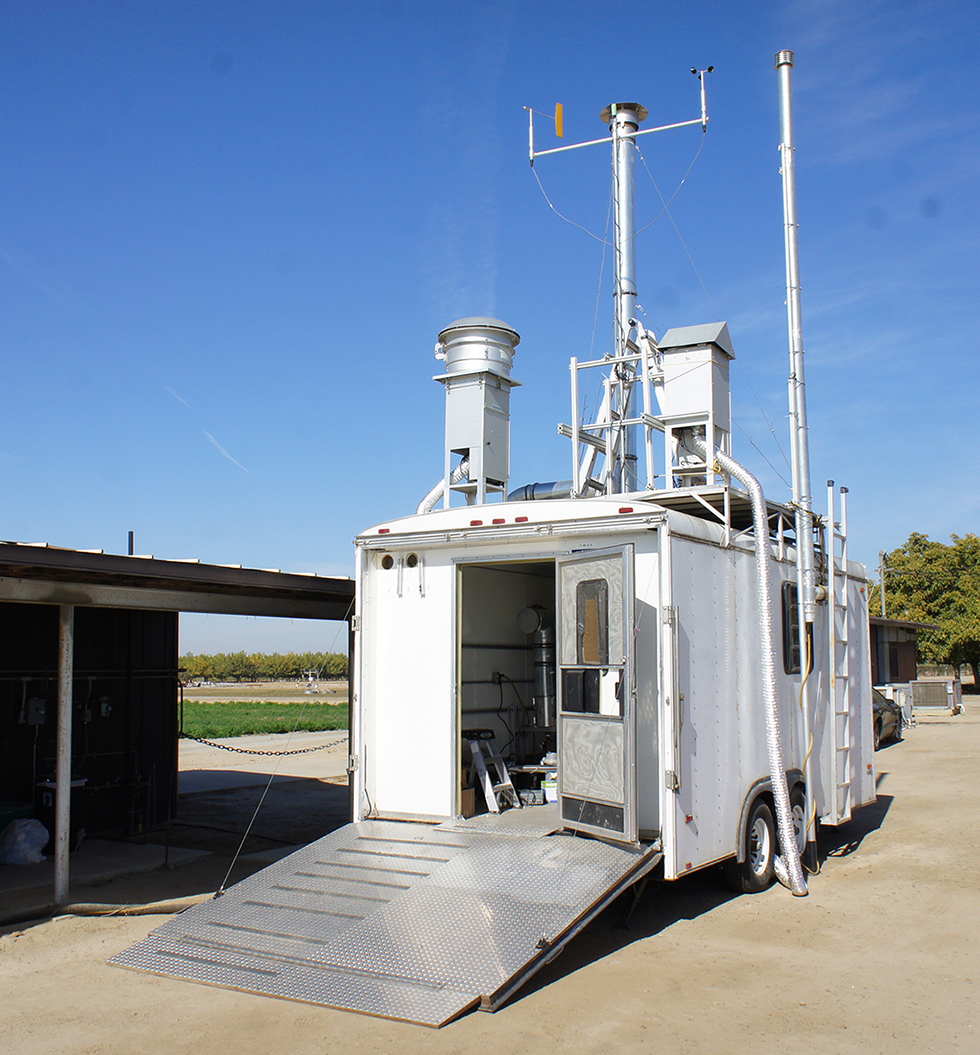
The Disappearing Salton Sea and Poor Air Quality in Imperial Valley Farm Communities
Small Grants, Big Impacts Series
Driving toward the Salton Sea from Calipatria, CA, this past spring, I was overwhelmed by a sense of desolation. Once the farmland ends, the earth turns to a dry, cracked wasteland.
Humberto Lugo, our guide for the day and leader at local public health organization, Comite Civico del Valle, tells us that just five years ago the water came all the way up to the road we’re driving on. The current shoreline is out of sight, and the dusty dryness I’m seeing out my window makes it impossible to even imagine this region filled with water.
We come over a small rise and park at the end of an old boat dock. Stepping out of the car is like stepping into a post-apocalyptic world. The dock has been long abandoned—the water’s edge is at least 300 meters away.
The ground crumbles with each step as we break through the crusted layer of dried salt, being careful to avoid the dead fish and bird carcasses scattered about. We walk around in amazement. Humberto just shakes his head, telling us that everyone has the same reaction.
That day, I was part of a team from UC Davis visiting the Imperial Valley to do some reconnaissance work for our upcoming air quality research project, Public Health and the Intersection of Water and Air Quality in the Salton Sea. The Imperial Valley is a vital agricultural area of our country, providing fruits and vegetables year round that are distributed both nationally and internationally.

The Salton Sea was formed in 1905 when a section of the Colorado River intended to irrigate farmland overflowed, forming the largest body of water in the state of California. Over the past several decades, water has been rerouted, leaving the Salton Sea stagnant—its only inflow from agricultural and industrial runoff. As a result, the sea has continued to shrink, leaving behind polluted dust that is continually blown into the air.
The community surrounding the Salton Sea is primarily Latino, with many being limited English speakers and having jobs tied to agriculture. In 2015, the number of emergency room visits due to asthma for children ages 5 – 17 was higher in the area surrounding the Salton Sea than anywhere else in the state. Community members are convinced that their breathing problems are due to Salton Sea dust – but up until now, no one has differentiated the sources or directly connected them to asthma.
That’s where I come in as a graduate student working along with Dr. Kent Pinkerton, Director of the Western Center for Agricultural Health and Safety and WCAHS investigator Dr. Keith Bein. We will be collecting air samples, characterizing their chemistry, and analyzing them for their potential to cause asthma.

Comite Civico del Valle has been helping us work with the community to choose a location for our mobile research trailer that will collect the air samples. After our second visit, we decided on the campus of Calipatria High School. We are working with the school principal and several teachers to involve the students in the study by having them help collect air samples, learn about air pollution and health, and be introduced to the scientific process. A plan is in the works for students to visit UC Davis in summer to see how the air samples are tested in the laboratory.
Study findings will be handed over to the Comite Civico del Valle at the end of the project to inform the community. They can then decide how to proceed with policy makers about the potential health crisis of the shrinking Salton Sea.
The project is a true confluence between basic science, public health and legislation. By the end of the trip I felt incredibly inspired and ready to do anything I could to help the people in this community.
Savannah Mack received graduate student funding from WCAHS to support her research on this project. The WCAHS Graduate Student Funding Program encourages graduate student work in agricultural health and safety.
